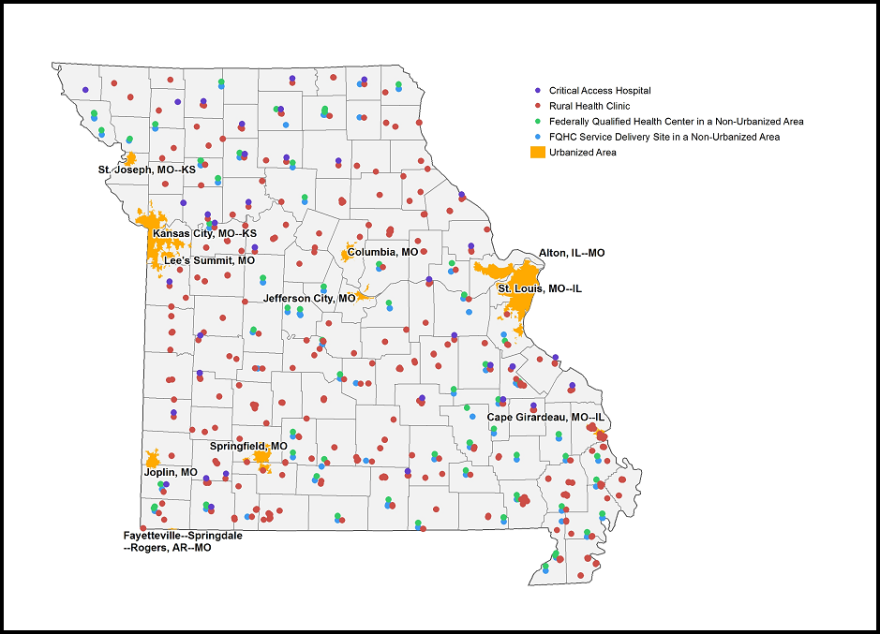Rural hospitals play a vital role in delivering quick emergent care to people in some of the more isolated areas of the country. These institutions provide 24/7 emergency services to rural communities where the next closest hospital could be 35 miles away or more. But because they often serve so few people, it’s hard for them to be financially successful. So the federal government set up the critical access hospital program, whereby hospitals meeting certain criteria would receive Medicare refunds at 101 percent of reasonable costs.
Since the program began in 1997, 1,331 hospitals have been given critical access hospital status, 35 of which are in Missouri. But policy makers are beginning to question whether that’s too many for the government to handle financially.
Brock Slabach doesn’t think so. Slabach is the senior vice president for member services at the National Rural Health Association, which released its Rural Relevance Under Healthcare Reform study this past April.
“Critical access hospitals aren’t costing the federal government what everyone seems to think [they are],” Slabach says. “The notion that the program is just a gaping hole in the federal budget is simply a myth.”
The numbers appear to support Slabach’s view. Critical access hospital spending is just 2 percent of the Medicare budget. Medicare is also spending less per patient in rural areas than it is in urban areas, to the tune of 1.5 billion dollars. But how can that be? Especially when critical access hospitals are getting that sweet reimbursement rate of 101 percent from the federal government?
One reason, Slabach says, is that rural hospitals are practicing patient centered care, while urban hospitals rely more on expensive specialty care, which run up Medicare costs.
Consider the following two scenarios:
Patient A lives in an urban area with a big university hospital and lots of doctors to choose from. She has a headache so she visits her primary care doctor, who sends her to a neurologist. The neurologist sends patient A for 2-3 tests totaling around $10,000.
Patient B lives in a rural area serviced by a critical access hospital. She has a headache so she visits her primary care doctor at the hospital, where they know her name, her family members, where she works, and the type stress she’s under. The family doctor sends Patient B home with a prescription, and tells her to come back for more testing if the headaches don’t go away in two weeks. The total cost for treatment is around $300.
“The only way we’re going to get a handle on reducing the cost of healthcare in this country is we have to get away from this specialty domination,” says Slabach. “We need to become more holistic in treatment and in coordinating care across the continuum. And the patient centered medical home is a model that does that.”
The patient centered medical home is a kind of healthcare hub where patients can receive the majority of their primary or specialty care with the added benefit of continuity of service. It’s a hot topic in healthcare right now, and it’s been proposed as a way to bring down the cost of specialty services and avoid errors made by endless referrals. It would require a shift in focus from specialty services to relationship-based, whole person-oriented care, which is difficult for large, specialty dominated urban institutions to do.
But it’s different in rural communities.
“My contention is that rural communities have been practicing patient centered medical home for decades,” says Slabach. “Because there’s not the dermatologist and the neurologist and the pulmonologist and the rheumatologist just down the hallway,” he says.
“Rural physicians are just more involved in following up on care for patients, seeking out care at a specialty level when it’s needed and not depending on self-referrals for services.”




